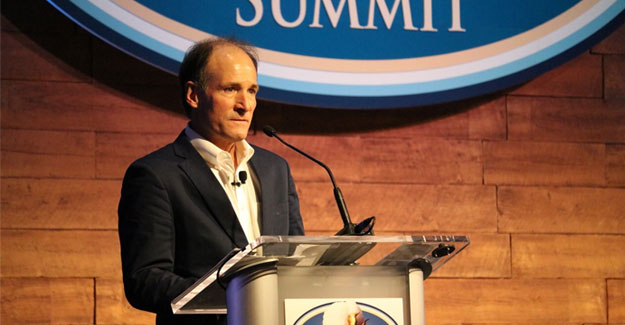US Cotton Industry Introduces Plan To Meet Sustainability Goals
At the Cotton Sourcing USA Summit in Scottsdale, Ariz., Cotton Council International President Ted Schneider updated the more than 400 attendees on how the US cotton industry intends to meet its 2025 sustainability goals. The November 12-15 summit theme was "Innovation, Quality and Sustainability."
Central to his remarks was the introduction of the US Cotton Trust Protocol; an integrated data collection, measurement and verification procedure that will document US cotton production practices and their environmental impact.
The data is intended to benchmark farmers' gains towards the industry goals and will provide the global textile supply chain additional assurances that US cotton is produced in a responsible manner.
The US cotton national sustainability goals, as announced last year, aim for the following by 2025:
- 13% increase in productivity, i.e. reduced land use per pound of fibre;
- 18% increase in irrigation efficiency;
- 39% reduction in greenhouse gas emissions;
- 15% reduction in energy expenditures;
- 50% reduction in soil loss; and
- 30% increase in soil carbon.
"I would argue that US cotton is already among the most sustainably produced in the world," Schneider said. As evidence, Schneider cited the comprehensive regulatory environment in the United States, the close connection of US growers to their land, the high adoption rates of precision agricultural techniques by US cotton growers, and a near 40-year track record of environmental improvement.
"We know that US cotton growers continue to embrace new technologies and management techniques that reduce impact and increase yield, but today's textile industry needs more than just our word," Schneider explained. "The Trust Protocol is meant to address that need with a tangible and transparent snapshot of US cotton growing practices and the gains resulting from them."
The details of the Protocol are being fine-tuned, and a pilot programme will be launched in 2019 and fully implemented with the 2020 cotton crop year. Participating growers would be required to adopt a data tool that allows for the quantitative measurement of key sustainability metrics, such as the FieldPrint Platform from Field to Market.
Growers also would complete a self-assessment checklist of best management practices; with a sampling of participating producers subjected to independent verification. The online interface and associated databases are currently being developed by a Memphis-based company The Seam.
The National Cotton Council works closely with brands, retailers and non-governmental organisations including the World Wildlife Fund.
"They like what we are doing. If we don't have their support, we don't have a programme that will be supported by the industry," Schneider said. "We're making sure that they have input and if we're going off in an area that will not work for them. It's important for us to know that. They're the ones driving this. We're evolving our industry and trying to respond to the needs of our customers." This type of collaboration is necessary for the cotton industry to evolve with its apparel partners.
Textile Excellence
Previous News
usterized® audits help mills improve quality management practices
Next News
xinjiang farmers ‘plant’ nylon in cornfields









